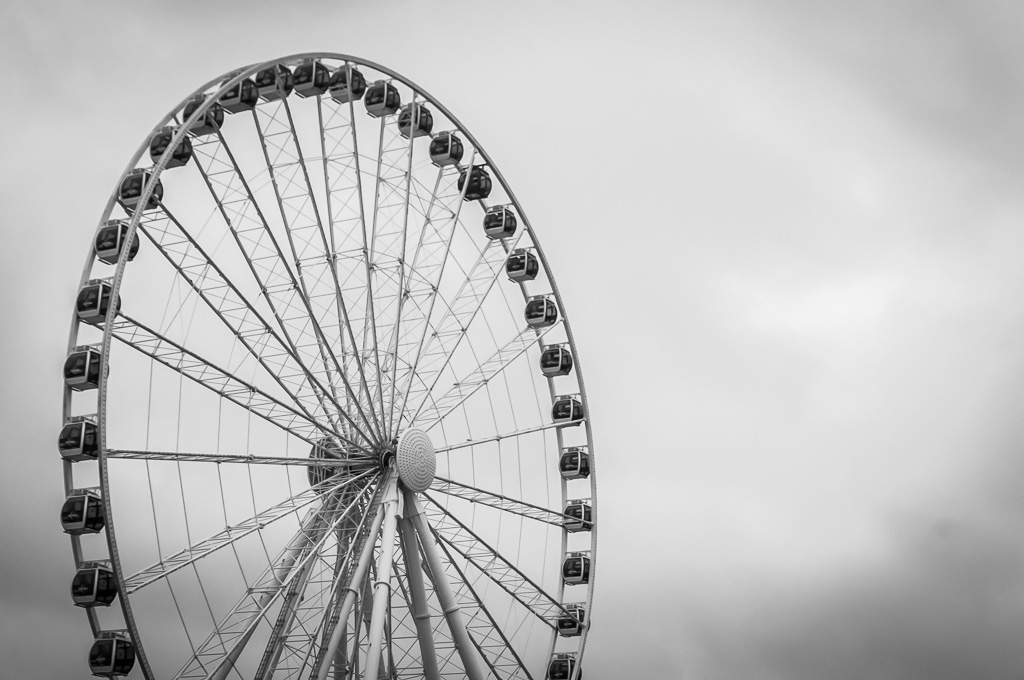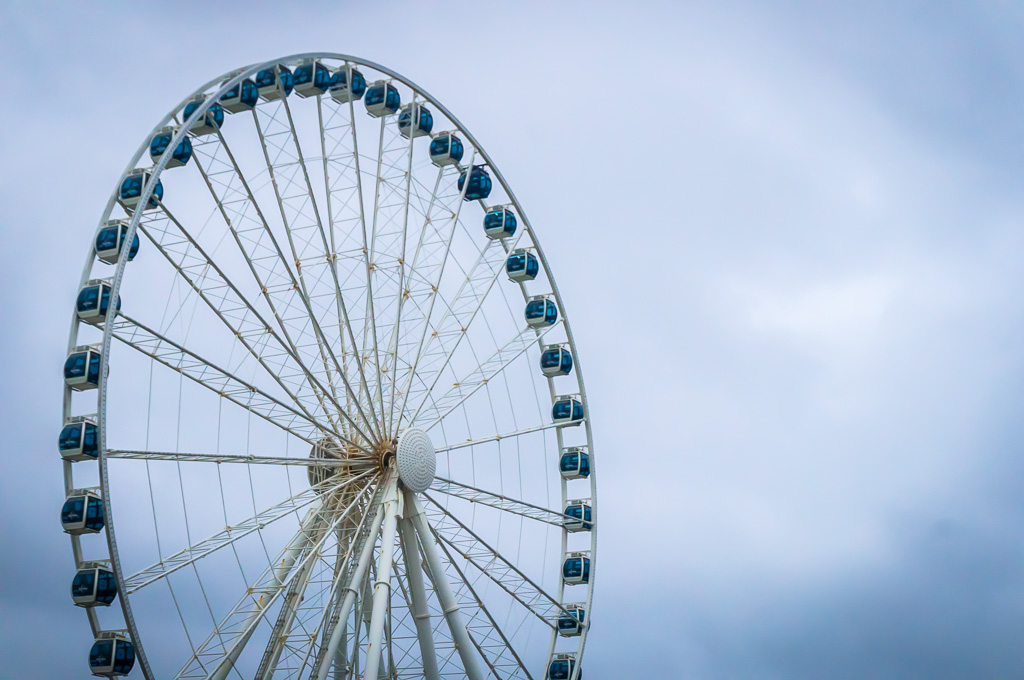 Adobe Community
Adobe Community
- Home
- Stock Contributors
- Discussions
- Re: Rejected Grain/Noise problem
- Re: Rejected Grain/Noise problem
Copy link to clipboard
Copied
Hi I had the following two images rejected because of a grain/noise problem, I've since upped the noise reduction a little, but wanted to get some feedback to if it's over processed as well, bad composition, whatever. Anything is appreciated!



 1 Correct answer
1 Correct answer
It is very difficult avoiding digital noise, no matter the lighting. Sometimes it's more than others. To reduce the noise/grain on your photos a little post processing is required. Not much. Too much will take away the natural appearance, and/or introduce additional noise. One of the reasons for noise is your ISO setting. The higher the ISO the more noise introduced. It is recommended that you use the lowest ISO, however there are times (eg. late evening, or night) that you'll definitely require
...Copy link to clipboard
Copied
I'm not sure what's going on with all these rejections because of noise/grain. It's clearly an algorithm analyzing all the images and making a bad judgement call. Can someone at Adobe please get to the bottom of this? All of my images are rejected for noise grain problems. Non processed, exterior daylight, properly exposed images get rejected for noise.
Copy link to clipboard
Copied
I feel your pain...I had 46 out of 55-60 pictures rejected tonight, ALL OF THEM for Grain/Noise issues. The other big generic one that gets A LOT OF ACTION is Artifact Issues...not saying I am the best photographer in the world (not even close) but seems rather odd that 3 out of 4 of my submissions are rejected, the over-whelming majority of them for Grain/Noise or Artifact issues...so tonight, I carefully scrutinized by rejections...IN ONE MINUTE someone from Adobe rejected 11 of my images for Grain/Noise issues. 46 images rejected in a period of about two hours.
First, cannot believe a HUMAN is actually looking at 60 of my pictures in a matter of less than two hours. Furthermore, I agree with you that their Algorithms may be off.
Keep plugging away...to hit my goal of 4000 accepted images I only have to submit about 16,000 more to hit my goal at the current rate of rejection.
Sherwood
Copy link to clipboard
Copied
I also had several images rejected for grain/noise and I have decided that Adobe Stock is a complete waste of time. You'll never earn anything to compensate for all of the time spent shooting at the rate things get rejected.
Copy link to clipboard
Copied
Last night I had 8/9 rejected for Grain/Noise problems and I have looked until my eyes hurt and could not for the life of me figure it out. I have a couple of big screen monitors where I preview all my shots before exporting. So, I just looked again and I think it could be only one thing and if it is, you will start crying like me before you realize you will need to redo the shots, wahhhhh!
What is your ISO on the rejected shots? Higher than 100 and I think you will have a problem, I am going to go now and compare to some of those which were accepted. Regards. e
Copy link to clipboard
Copied
I'm getting really tired of reading about rejections for noise and grain. ALL PHOTOS have noise and grain. I submit for your consideration DPReview's dynamic range test for a Nikon D750 @ ISO 100, 1/5 sec. shutter. Look at 1:1 and particularly at the edges of the squares on the color checker. Look at the colored surfaces. You WILL see noise. The D750 is a highly renowned full-frame camera, yet even at ISO 100 there is visible noise. It is even more obvious for an 80D with the same exposure.

I have several photos with similar amounts of noise that were rejected for grain/noise issues. The only photo of mine that Adobe Stock has accepted is a picture I took handheld with a micro four-thirds camera at higher than base ISO and has even more noise!
It seems to me that Adobe Stock is considered to be overpriced by most people and they are trying to position itself as a high-end service and aggressively looks for something to reject in a naive attempt to exclude all but the absolute top tier of stock images. Adobe is not paying me anything to shoot stock for them. If they want photos that are technically as close to perfect as possible, they should pony up some cash because not even the best photographer with the best camera money can buy is going to produce that without lots of time and effort, and that time has a monetary value.
Copy link to clipboard
Copied
Hi,
as I understand the Dynamic Range test you linked to, underexposed test photos were taken here and then corrected in Camera Raw for correct exposure. Here it should be shown how high the correction potential of the cameras is, until there is image noise.
To conclude from this that there is always image noise in photos is in my opinion not correct. If the images were correctly exposed and unprocessed with the full-frame cameras used in the test, for example, there would first be no image noise.
Image noise in general is influenced by several factors: Size of the image sensor, light conditions during shooting, ISO setting, existing contrasts in the image subject. So you can create image noise with any camera, either directly at the moment of recording, or in a subsequent image processing.
Only the camera technology alone does not guarantee noise-free images. More expensive cameras with large image sensors reduce the risk of image noise and here everyone has to decide for himself how much money he is willing to invest here.
The fact is, however, that picture agencies have their minimum standards as far as the technical quality of the pictures is concerned. These vary slightly depending on the agency, but they have to be observed.
Greets,
v.poth
Copy link to clipboard
Copied
Taking photographs without noise is 100% impossible. Asserting otherwise is contrary to fundamental physics. It is unavoidable. Your assertions regarding more expensive cameras and larger sensors are refuted by the image tests that you were looking at: there is a Hasselblad medium-format camera available in the dynamic range image sets to compare against and it has significantly more visible noise than both the D750 or the A7 III even at very low ISO.
Copy link to clipboard
Copied
Hi,
You apparently want to prove here that it is generally impossible to create photos without image noise to question your/all rejections because of image noise on the part of picture agencies. As a provider, this will certainly not help you with the acceptance of your images, because they have their standards and as long as no image noise is visible in the 100-200% view, everything is ok for the agency. How you achieve this is up to your knowledge of your camera and photography technique.
If you want noise-free images, and this is a minimum requirement at picture agencies, then produce them with the technical possibilities you have, and this is certanly possible. But I think it's the wrong way to question the tried-and-true technical advantages of cameras with a large sensor in terms of image noise with Internet links and obviously without any own knowledge.
Concentrate on your development as an image supplier as far as the technical requirements, the image design and the market requirements of the agencies are concerned and the success rate will certainly increase.
It is not the technology that makes the picture, but the head that looks through the viewfinder and operates the camera.
Greets,
v.poth
Copy link to clipboard
Copied
Well stated v.poth. Regards, JH
Copy link to clipboard
Copied
You apparently want to prove here that it is generally impossible to create photos without image noise to question your/all rejections because of image noise on the part of picture agencies.
You have made assumptions about my intentions and your assumptions are wrong. In an earlier post, you made a false statement about image noise:
To conclude from this that there is always image noise in photos is in my opinion not correct. If the images were correctly exposed and unprocessed with the full-frame cameras used in the test, for example, there would first be no image noise.
I can provide countless resources explaining image noise and why there is always noise even in the most ideal of circumstances. All photographic images have noise, full stop. It essentially boils down to the fact that photons have a certain amount of randomness in their behavior and that randomness becomes image noise.
As a provider, this will certainly not help you with the acceptance of your images, because they have their standards and as long as no image noise is visible in the 100-200% view, everything is ok for the agency. How you achieve this is up to your knowledge of your camera and photography technique.
I am not arguing to have more images accepted; I've already decided to stop submitting to Adobe Stock. I understand why they evaluate as they do. I don't have to agree with it to understand it, and it is irrelevant to the current line of discussion which is about factually incorrect statements regarding image noise.
If you want noise-free images, and this is a minimum requirement at picture agencies
All photographic images have noise. Perhaps your intent is more along the lines of "noise that is difficult to see" or "noise that does not visually detract from the overall image" but there is no such thing as a noise-free image from a photographic source. If it was drawn in Illustrator or MS Paint then noise-free is the default, but that doesn't seem to be what's being discussed.
I think it's the wrong way to question the tried-and-true technical advantages of cameras with a large sensor in terms of image noise with Internet links and obviously without any own knowledge.
The image sensor size is only one factor in the performance of a camera. A sensor can be medium-format in size while having more read noise in each pixel than, say, a micro four-thirds sensor with less read noise. A medium-format sensor with a lower quality lens will produce worse image quality than a micro four-thirds camera with a very high-quality lens. Fixation on sensor size alone is simply naive. Bigger sensors don't automatically produce better images simply by being bigger, all other things being equal. There are some instances where smaller sensors can outperform larger sensors, particularly if a shallow depth of field is not desired.
Concentrate on your development as an image supplier as far as the technical requirements, the image design and the market requirements of the agencies are concerned and the success rate will certainly increase.
When I examine the overall value that Adobe Stock presents to me (of which one significant factor is the very high rejection rate) I see no reason to put forth that effort for the purpose of participating in Adobe Stock. This is a highly personal conclusion; yours may (and probably does) differ. Neither conclusion is wrong.
It is not the technology that makes the picture, but the head that looks through the viewfinder and operates the camera.
While I mostly agree with this and understand the sentiment being expressed, the technology does play a big part, as you have implicitly acknowledged with your affinity for larger sensors and more expensive cameras. Bringing the original issue full circle, if Adobe will reject nearly everything I shoot because I have cameras that are technically incapable of producing images with noise below Adobe's tolerances or shoot what I shoot in ways that don't always allow for long exposures at base ISO resulting in even more of the same, I'm wasting time if I shoot anything and then upload those images to Adobe Stock.
Copy link to clipboard
Copied
So, is this answered or not? You disagree and now what? Perhaps this is finished. Interesting discussion. Thanks, JH
Copy link to clipboard
Copied
Hi,
I don't think I wrote something wrong regarding the ratio of sensor size to image noise and I guess you haven't read my comment exactly enough. A deeper scientific discussion going beyond the quality requirements of picture agencies does not make sense here in the supplier forum of a picture agency because it does not help anyone. It doesn't matter if every photo can't be noise-free due to physical laws, the only thing that counts is that it can be judged as noise-free and sold according to the agency's requirements.
If you can't keep to the standards as an image supplier to the stock agencies, then this marketplace is nothing for you and I can understand why you stopped your engagement because of failure. But I don't think you can blame the agency here.
I recommend here pictures whose refusal you doubt here in the forum to post and you get the opinion of other offerers. Nothing else makes sense and helps you if you want to sell photos. If you are not interested in it and only want a scientific discourse you are not in the right place here. There are other discussion platforms in the social media world.
Copy link to clipboard
Copied
Hello,
I agree with V.Poth with what he has said. Secondly, if an agency wants to sell high-end images, they have to have strict acceptance conditions. How much the contributor gets for their images is another story!
Copy link to clipboard
Copied
It is very difficult avoiding digital noise, no matter the lighting. Sometimes it's more than others. To reduce the noise/grain on your photos a little post processing is required. Not much. Too much will take away the natural appearance, and/or introduce additional noise. One of the reasons for noise is your ISO setting. The higher the ISO the more noise introduced. It is recommended that you use the lowest ISO, however there are times (eg. late evening, or night) that you'll definitely require higher ISO settings. In this case you might require to adjust other settings that will allow the reduction of noise/grain. The best thing to do in this case is to get to know your camera. Read the manual and practice.
As I said before post processing is required in most cases, if not all. To inspect your photos for noise/grain, apply a 100 to 200% zoom. Look in the dark areas for digital noise, and in the smoother area for grains. Use the relevant noise reduction tool to reduce the chromatic and luminant noise. Since this process softens your photos, sharpening is also required. Read up as much as you can on photo editing and practice. Some of your photos will eventually be accepted. You can start with Create better photos for Adobe Stock with 7 tips for success | I hope this helps.
Best wishes.
Copy link to clipboard
Copied
It is never pleasant having your photographs or illustrations rejected. Hopefully, you have had enough of your work accepted and purchased to help you value your work as a professional photographer and you can handle this rejection process. It is not for the faint of heart.
May I suggest that there might be something to learn about these specific photographs. It is important for you and every other stock contributor to closely examine the photos at 100% magnification before you submit them to Adobe Stock. Until you have done this, nothing we say will make sense to you about your rejection for grain and noise problems. Look along all of the edges of objects. I can see some problems with the upper part of the wheel mostly on the right.
For now, this up to you to find the areas spotted by the source of the rejections. Once you get into the habit of being your own hard critic, you will know how to prepare your work for the Adobe Market.
It is also very important to learn and use all of the guidelines Adobe has published for all stock contributors. If you do want to sell through Adobe Stock you will want to memorize these guidelines and strictly adhere to them. Here is a site for you to visit. I hope you will not give up but it is up to you. Best regards, JH
For you to be able to achieve better image results and get offerings accepted into Adobe Stock go to https://helpx.adobe.com/stock/contributor/user-guide.html
Copy link to clipboard
Copied
Image noise / grain isn't just created by the ISO & camera but also by lack of light. I had images rejected on here & other sites at 200 - 800 ISO because of noise. It wasn't the cameras fault, (sony alpha Nex 5n} just that it was taken just after sundown when the sky is getting darker. I reduced the noise on GIMP software which is free and they should be fine.hopefuly
When the sky was almost completely dark, I had a photo accepted on here even at 1600 ISO
Copy link to clipboard
Copied
I had some photos rejected for technical problems yet one is much better lit & composed than others on here of the same subject. They didn't even say what was wrong, .I could find only CA color fringing in the below photo of the church but the others I can only guess. One below had a dark background maybe with a hand sanitizer bottle lit by colored spot lighting
Copy link to clipboard
Copied
Is there some reason you keep resurrecting 2 year old discussions?
Just saying...
Copy link to clipboard
Copied
what does that mean?
Copy link to clipboard
Copied
Look at the date on the first post in this discussion, it's from 2017!!
To start a new discussion, Go to the board's overview page. Click the blue Post To Community button near the top. See screenshot.
Adobe Stock Contributors
List of All Community Boards
Copy link to clipboard
Copied
I need to post a question but dont know how.
Copy link to clipboard
Copied
Just ask. You know how to post.






